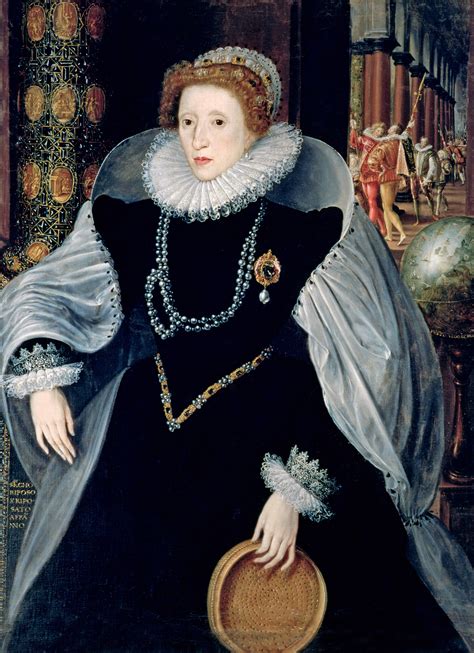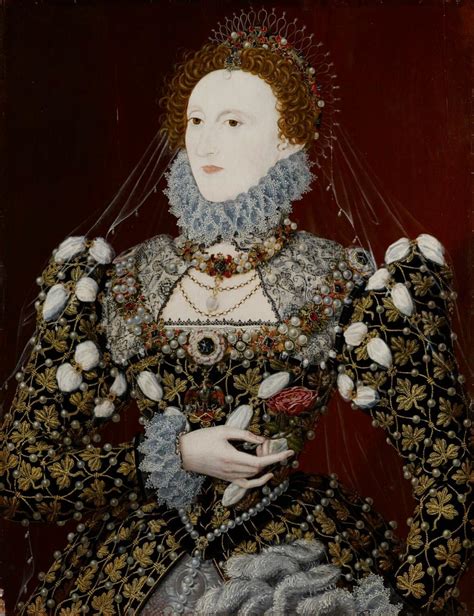shell symbol on tudor portrati | Symbolism in portraits of Queen Elizabeth I shell symbol on tudor portrati Learn how to analyse portraits of Queen Elizabeth I. Unpick symbols and discover how messages and meaning were communicated through portraits designed to project an image of power and . © 2024 Google LLC. Visit my blog at: http://www.Alistun.blogspot.comDual Blade 5th Job Advancement1) Level up to 70.2) Speak to Arec in El Nath.3) Go to Dark Lord in Kerning's .
0 · Tudor portraits: Queen Elizabeth I, power and symbolism
1 · Tudor Portraits
2 · The Phoenix and the Pelican: two portraits of Elizabeth I, c.1575
3 · Teachers‟ Notes THE TUDORS
4 · Symbolism in portraits of Queen Elizabeth I
5 · Symbolism in Elizabeth's Portraits
6 · Portraiture of Elizabeth I
7 · Gloriana’s Rainbow: Elizabeth I and the Rainbow Portrait
8 · Elizabeth I in Portraiture
9 · Analysing Portraits
Šeit norisinās visi CHILL.LV konkursi un kā arī atrodamas dāvanas. Threads 3 Messages 97. Threads 3 Messages 97. Beeps ar JAUNU KONKURSSU. Jun 13, 2022; c0linfurzE; Noteikumi / Rules. Foruma un serveru noteikumi, kuri jāievēro visiem, kas uzturas CHILL.LV serveros. Threads 2 Messages 3. Threads 2 Messages 3.
The pelican was one of Elizabeth's favourite symbols. It was used to portray her motherly love to her subjects. In times of food shortages, mother pelicans were believed to pluck their own breasts to feed their dying young with their blood and save their lives. In the process of feeding the mother would die. In the . See moreMoons and pearls were used to present Elizabeth as Cynthia (Artemis), the Greek goddess of the Moon, who was a virgin and therefore pure. Sir Walter Raleigh helped to promote the cult of Elizabeth as a moon goddess with a long poem he wrote during the late . See more
An armillary sphereis a skeletal celestial globe used to represent and study the movements of the planets. It was used to represent wisdom and power and also as a symbol of the good . See more

Elizabeth had lots of symbolism in her portraits that is easy to overlook. For example, this “Rainbow” portrait is loaded with symbolism and I’m not sure how I never noticed .Learn how to analyse portraits of Queen Elizabeth I. Unpick symbols and discover how messages and meaning were communicated through portraits designed to project an image of power and .
Portraits of the young queen, many of them likely painted to be shown to prospective suitors and foreign heads of state, show a naturality and restraint similar to that of the portrait of the young Lady Elizabeth. The full-length Hampden image of Elizabeth in a red satin gown, originally attributed to Steven van der Meulen and reattributed to George Gower in 2020, .Tudor portraiture; the vast majority of Tudor portraits flatter the sitter. Another way to detect flattery is to compare the painted portrait with a written description of the sitter, though .
Tudor portraits: Queen Elizabeth I, power and symbolism
The beautiful crown on her head is a symbol of the monarchy. Her portraits have long since passed the time when they needed to show she was the rightful queen; Elizabeth is .

The rainbow is a symbol of peace. The inscription on the portrait says, “non sine sole iris,” or “Without the sun, there can be no rainbow.” In this radiant portrait of Elizabeth, she is .Elizabeth is shown holding a red rose, a symbol of the House of Tudor and she wears a heavy jewelled collar of a type worn by her father, King Henry VIII. The changes to the eyes, mouth .
The serpent on her sleeve denotes wisdom and cunning, the eyes and ears denote her all-seeing, all-hearing knowledge of her kingdom and people; the rainbow in her hand, with the inscription .
Complete the worksheet to identify the meaning of a variety of symbols, such as gloves, pearls, and fans, and use these prompts to analyse one of two Elizabethan portraits. Includes .
Tudor Portraits
This theory gathers strength if we analyse the etymological origin of the word scallop. This comes from the Galician word scallop, which comes from the Latin veneria (sea shell) or venerates, both concepts related to the goddess Venus.. Although the figures are different, both theories agree to associate the pilgrim’s shell with the idea of rebirth. A feeling that people experience when they .
Dress – Elizabeth is wearing a stunning costume, a French Gown decorated with pearls, embroidery and blackwork embroidery, as well as a spectacular ruff. It is a dress to impress and the black and gold colour speaks of Elizabeth’s wealth and status. Pearls – Again we have Elizbeth’s favourite jewellery and this time we have a strand around her waist, a girdle. The beautiful crown on her head is a symbol of the monarchy. Her portraits have long since passed the time when they needed to show she was the rightful queen; Elizabeth is the monarch. She is also wearing pearls, a symbol of virginity. In her hand she holds a rainbow, a symbol of peace; she possesses peace.
There are a raft of Tudor portraits in Room 1. At that time, standalone portraiture was a hugely popular art form. Over time, the scale and imagery of the portraits became quite ambitious. This Tudor portrait is a study of England’s most famous (or infamous) king Henry VIII by Hans Holbein. From this close association with the Camino the scallop shell was more generally known as a symbol of pilgrimage. It was used to symbolize the Christian’s journey towards heaven, evoking the .
About TUDOR LODGE FUEL STATION TUDOR LODGE FUEL STATION is a service station located in MIDDLESBOROUGH area. This service station has a variety of fuel products including Shell V-Power Unleaded, Shell V-Power Diesel and Shell FuelSave Unleaded. This station includes a Shop, a Car Wash and a Toilet. Food and drinks offerings include Sandwich. by Heather R. Darsie One of the most iconic images of Elizabeth I in full array as Gloriana, the Virgin Empress of the Seas, is the Rainbow Portrait, painted around 1600. Elizabeth turned 67 years old in 1600. She became Queen of England in 1558, and the weight of her responsibilities was surely showing on.
The work is by Nicholas Hilliard (1547-1619) and is named after the pendant the queen wears hanging on her chest. The phoenix symbolizes regeneration and chastity. The bird hangs from a gold Tudor Rose with a dark central jewel. Her dress is studded with pearls, a symbol of purity, and she holds a feather fan in her left hand and a rose in her .Learn how to analyse portraits of Queen Elizabeth I. Unpick symbols and discover how messages and meaning were communicated through portraits designed to project an image of power and strong female identity. . People questioned Elizabeth’s right to rule Tudor Britain Tudor Britain England and Wales from 1485 to 1603, when kings and queens . The conch shell is often depicted in Buddhist artwork and used in rituals to evoke positive energy and blessings. 3. Indigenous Cultures. Many indigenous cultures associate conch shells with the ocean, which they consider a sacred and powerful source of life. The conch shell is seen as a symbol of fertility, abundance, and spiritual connection.These portraits were brought together as part of the National Portrait Gallery’s Making Art in Tudor Britain research project. From 13-19 September, they were displayed together for the first time for nearly thirty years at the National Portrait Gallery. . Elizabeth is shown holding a red rose, a symbol of the House of Tudor and she wears a .
The Phoenix and the Pelican: two portraits of Elizabeth I, c.1575
Tudor and Elizabethan portraits. A selection of portraits from 1485 to 1603, many of which are on display at the Gallery or at Montacute House, our regional partner in Somerset. Portraits below are listed in chronological order. Explore the Tudor pick-up guides. View larger image;The Tudor rose was used in Queen Elizabeth I's portraits to refer to the Tudor dynasty and the unity it brought to the realm. The rose also had religious connotations, as the medieval symbol of the Virgin Mary.

Elizabeth had lots of symbolism in her portraits that is easy to overlook. For example, this “Rainbow” portrait is loaded with symbolism and I’m not sure how I never noticed it before. “Mon Sine Sole Iris” means No Rainbow Without the Sun. Only the queen’s wisdom can ensure peace and prosperity.Learn how to analyse portraits of Queen Elizabeth I. Unpick symbols and discover how messages and meaning were communicated through portraits designed to project an image of power and strong female identity.In other paintings, she holds or wears a red rose, symbol of the Tudor Dynasty 's descent from the House of Lancaster, or white roses, symbols of the House of York and of maidenly chastity. [21] In the Hampden portrait, Elizabeth wears a red rose on .Tudor portraiture; the vast majority of Tudor portraits flatter the sitter. Another way to detect flattery is to compare the painted portrait with a written description of the sitter, though obviously writing can be biased too. Here is a description of Henry VII from Polydore Vergil‟s Anglica Historia, which Henry commissioned in 1505.
The beautiful crown on her head is a symbol of the monarchy. Her portraits have long since passed the time when they needed to show she was the rightful queen; Elizabeth is the monarch. She is also wearing pearls, a symbol of virginity. The rainbow is a symbol of peace. The inscription on the portrait says, “non sine sole iris,” or “Without the sun, there can be no rainbow.” In this radiant portrait of Elizabeth, she is the sun.Elizabeth is shown holding a red rose, a symbol of the House of Tudor and she wears a heavy jewelled collar of a type worn by her father, King Henry VIII. The changes to the eyes, mouth and nose evident beneath the paint surface may indicate that the artist began this portrait first.The serpent on her sleeve denotes wisdom and cunning, the eyes and ears denote her all-seeing, all-hearing knowledge of her kingdom and people; the rainbow in her hand, with the inscription ‘Non sine sole iris’, indicate that it is Elizabeth’s enlightened rule that brings peace and prosperity.
cheapest cartier
miami cartier
719. 13K views 1 year ago #LouisVuitton #Exhibitions #ArtandCulture. Celebrating the 160 years of creative exchanges that have taken place in tandem with Louis Vuitton’s innovative evolution, the.
shell symbol on tudor portrati|Symbolism in portraits of Queen Elizabeth I


























